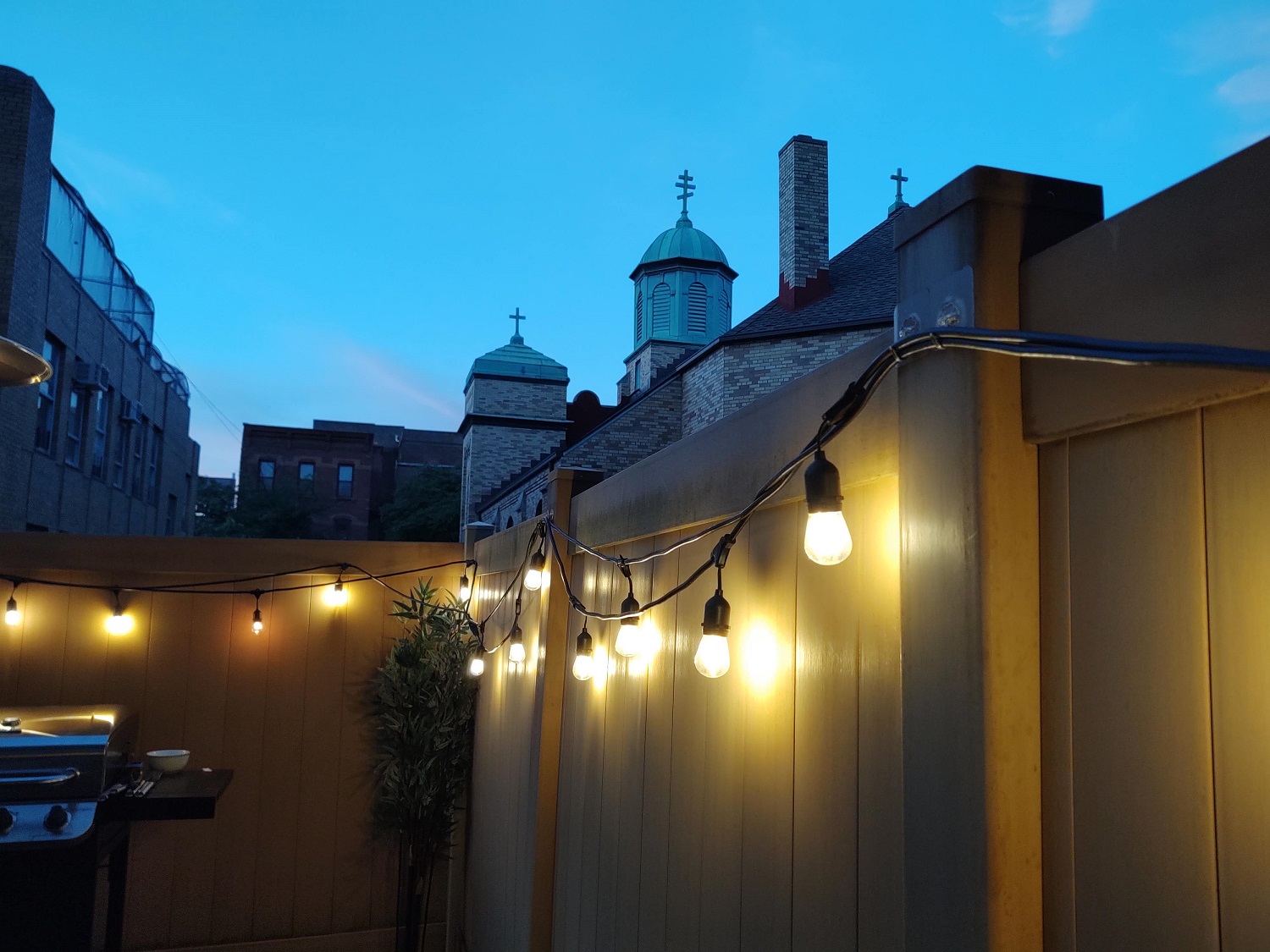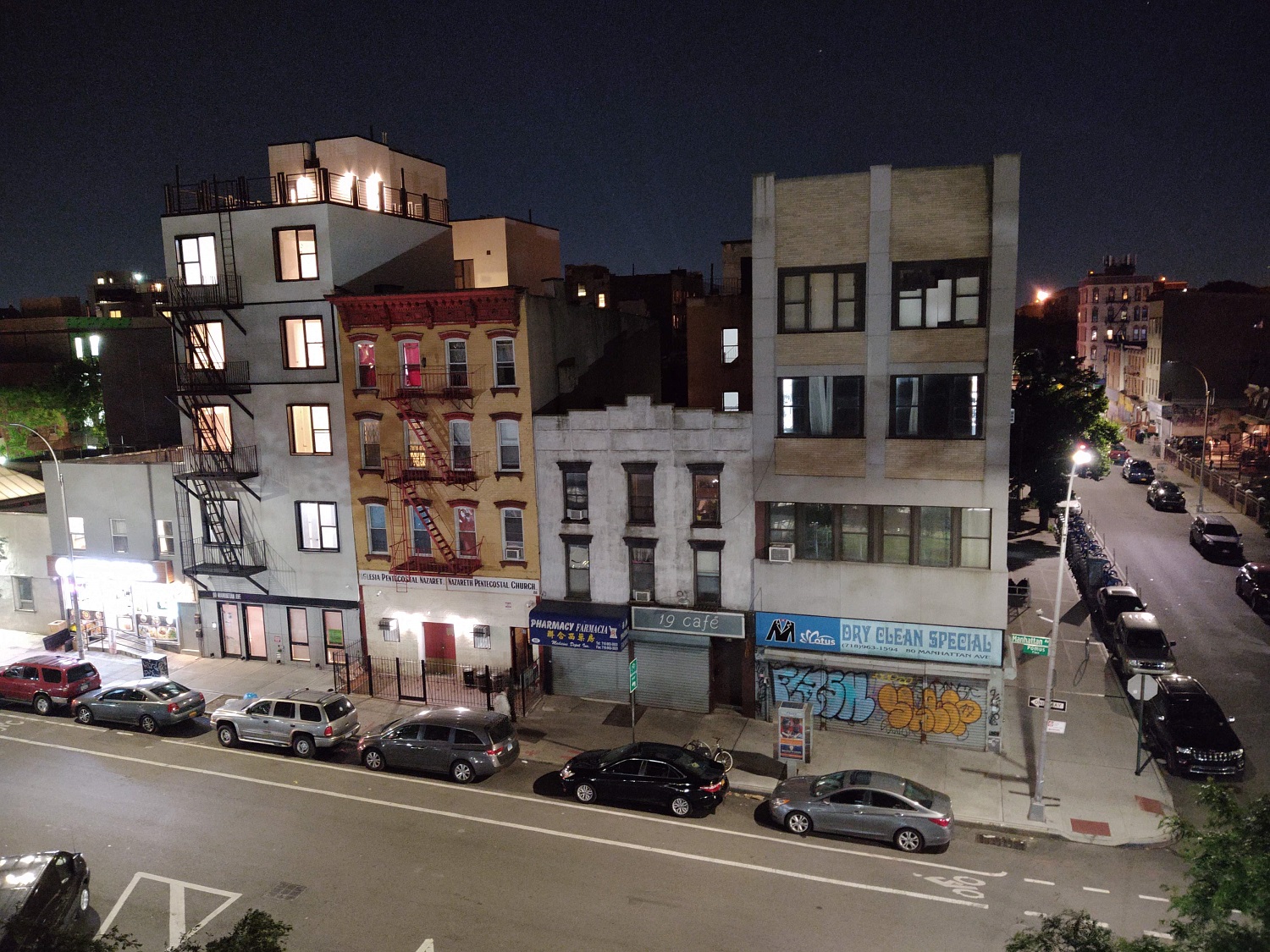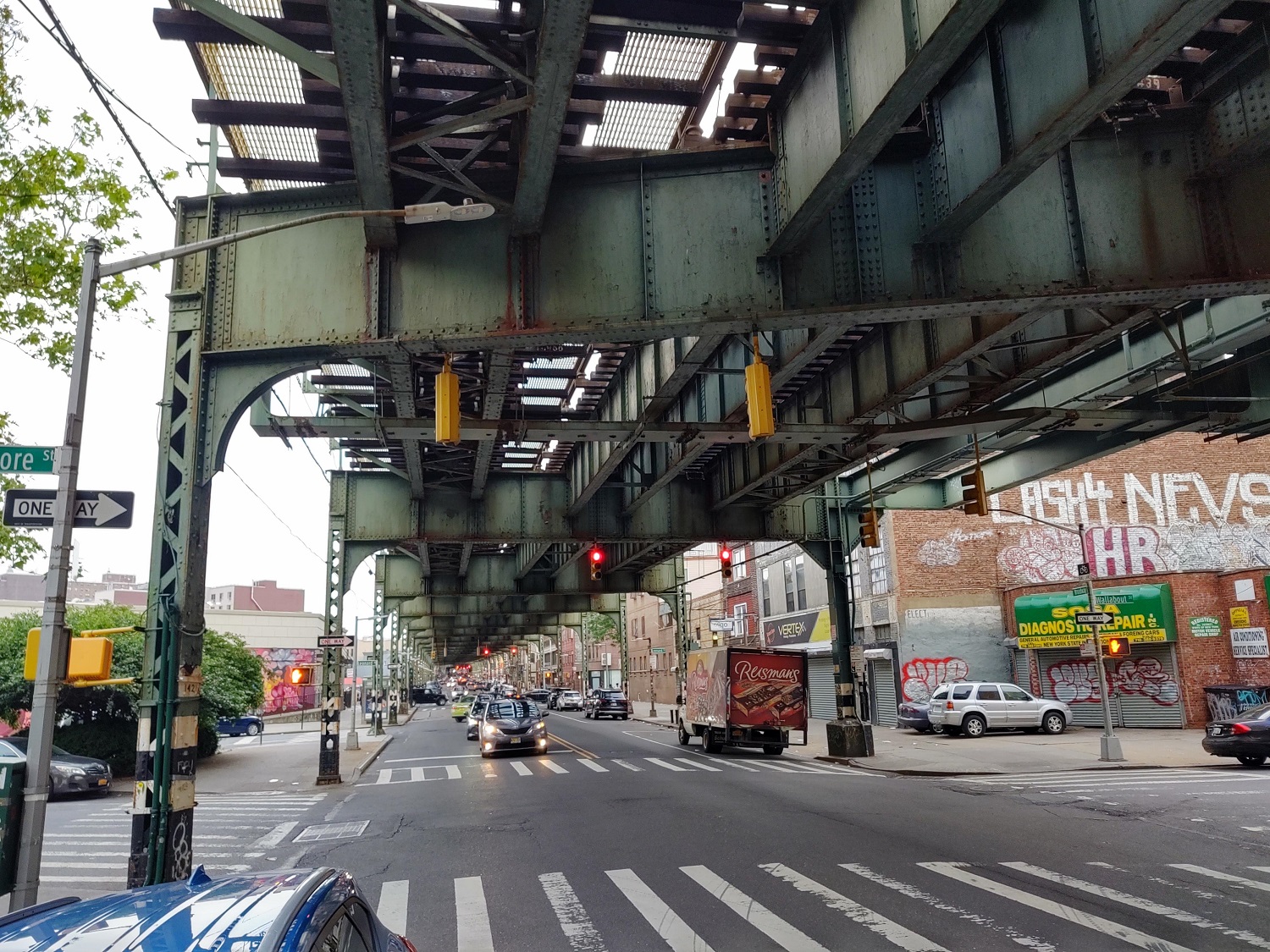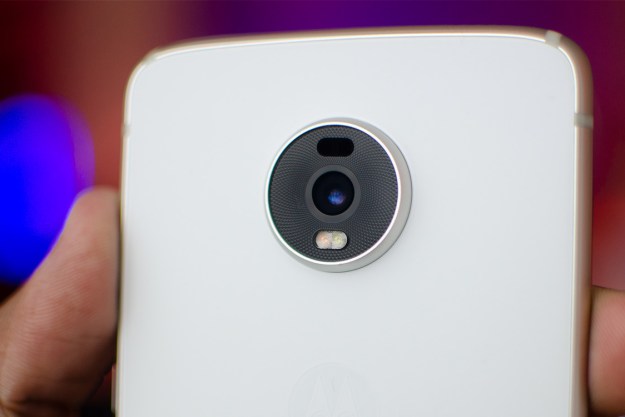
“The Moto Z4 checks off the right boxes, and nothing more.”
- Good performance, simple software
- Capable camera
- Headphone jack is back
- Moto Mods add utility
- Only Android Q update is promised
- No new Moto Mods, bundled 360 Mod is perplexing
- Priced too high, and doesn't stand out
The Moto Z4 is not an exciting phone. It doesn’t bring anything new to the table, and at $500, you can buy similarly-priced phones with more compelling features, like the Google Pixel 3a or the Asus ZenFone 6.
That doesn’t mean it’s a bad phone. The Moto Z4 offers solid performance, a large battery, a promising camera, and a nice software experience. You can still use Moto Mods, and some are genuinely useful. But at the end of the day, the Z4 is priced a little high. You should only buy this phone if you’re on Verizon’s network, as it’s available for $400 if you’re an existing customer and you’re upgrading (and even less if you’re switching to Verizon).
Moto Mods, and a large display
The Moto Z4 looks a lot like its predecessors. That’s because it maintains the modular system so Motorola’s Moto Mods can magnetically attach to the back of the phone. The phone’s dimensions needed to be similar so Moto Mods that worked on the Moto Z3 or original Moto Z can work flawlessly on the Z4. That’s great if you already own a few mods and are planning on upgrading from an older Moto Z phone.
Motorola offers 16 Moto Mods at the moment, with the most recent being the 5G Moto Mod. No new Moto Mods are launching with the Moto Z4, which is disappointing. Still, I’ve always liked Motorola’s implementation of mods. They’re easy to snap on and use. I can only recommend a few mods, though, such as the battery mod for longer battery life, the JBL Soundboost 2 speaker mod for blasting music, the wireless charging mod, and the Polaroid Insta-Share Printer mod. I’ve been using the wireless charging mod on my Moto Z4, as I have wireless chargers around my house and at work. It’s convenient, but charging speed is slow.
The phone’s back boasts etched matte glass (Gorilla Glass 3), and it feels nice. The matte texture eliminates ugly smudges and fingerprints, and it’s difficult to tell it’s a glass back. At the very bottom are pogo pins that are required for data transmission between Moto Mods and the phone. There’s also a large and ugly camera bump, but that disappears if you slap on a Moto Mod case.

The display is protected by Gorilla Glass 3 as well, and Motorola has jumped on the bezel-less and notch bandwagon. The edges surrounding the screen are slim, and that delivers a larger 6.39-inch display while maintaining nearly the same body size as the Moto Z3 (which has a 6-inch screen). This makes apps and other content look good. It’s an OLED display with 2,340 x 1,080 resolution, and it looks sharp, with strong colors and deep blacks. The screen is bright for most conditions, but can be tough to see in direct sunlight.
The Moto Z4’s screen is cooler and better white balanced over the Pixel 3a XL. Screen resolution is similar, though the Moto Z4 does offer higher brightness levels. Comparing speakers is an entirely different story. The Moto Z4 has top-firing speakers that are too easy to block when holding the phone in landscape mode. The Pixel 3a XL has two speakers — one front facing and one bottom-firing — and not only is it louder, but it also delivers richer sound. You definitely need a speaker Moto Mod if you want a good experience.
The Moto Z4 offers solid performance, a large battery, a promising camera, and a nice software experience.
While I like the feel of the Moto Z4, it’s a bit difficult to reach the top of the screen; this is a two-handed phone. Things get worse when you permanently attach Moto Mod to the back — like the wireless charging mod — as the 2.5D curved edges make the mods feel like they’ve been taped on. They don’t fit like a glove like on previous Moto Z phones.
Gone is the sensor that used to sit on the side of the phone. It’s now under the display, a move we’ve seen from several handset-makers already, including Samsung. It’s an optical in-display fingerprint sensor, and Motorola said it performs as reliably as the capacitive sensor in Moto Z phones before. My tests say otherwise. The scanner is better than the likes we’ve seen on the OnePlus 6T or the Huawei Mate 20 Pro, but it’s still not as reliable as traditional fingerprint scanners.
I initially had a lot of trouble getting it to work, but the trick is to scan your fingerprint multiple times; it works a lot better. I still wouldn’t call it reliable, and I would rather have a side-mounted sensor again instead of one under the glass.
Thankfully, there’s a face unlock option that works well, though it’s not secure and can’t be used to authenticate payments or access sensitive apps — unlike Apple’s Face ID.
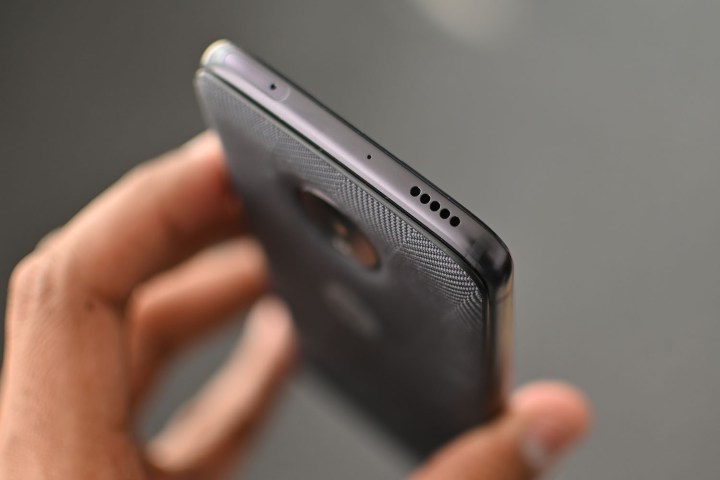
The right side of the phone has a textured power button below a volume rocker. You can double tap the power button to trigger Google Assistant by default, which is a nice touch. On the bottom edge is a USB-C charging port, alongside — wait for it — a headphone jack! Yes, Motorola took out the headphone jack in the Moto Z, but it’s making a comeback in the Moto Z4. Why? Customers complained. It’s nice to see Motorola listening to feedback.
Good performance, uncluttered software
Motorola has stuffed Qualcomm’s Snapdragon 675 processor inside the Moto Z4 with 4GB of RAM. This gives me mixed feelings. On the one hand, phones like the Pixel 3a (which has the Snapdragon 670) hardly had any issues, even when playing games like PUBG: Mobile. This rings true with the Moto Z4. It performs admirably. Games like Pako Forever, PUBG: Mobile, and Alto’s Odyssey run smoothly, with the occasional stutter. I did notice the Moto Z4 does tend to get warm quite quickly, which means prolonged gaming may be an issue as the processor will throttle performance.
The Pixel 3a is $400, though. For around the same $500 price as the Moto Z4, you can buy the Asus ZenFone 6, which packs the flagship Snapdragon 855 processor — the same chip that’s inside the Samsung Galaxy S10 Plus and other high-end phones. That chipset is much faster and will hold up better as the years pass by.
Here are a few benchmark results:
- AnTuTu 3DBench: 162,475
- Geekbench 4 CPU: 2,381 single-core; 6,411 multi-core
- 3DMark Sling Shot Extreme: 1,053 (Vulkan)
The OnePlus 7 Pro, which is $680, has much better scores, and the Asus ZenFone 6’s numbers also fly by the Moto Z4. The Z4 does beat out the Pixel 3a, however. You’ll be satisfied with the Moto Z4’s performance, but you can get more for your money.
On the software side, Motorola offers a close-to-stock Android 9 Pie interface. It’s simple to use, and the unlocked model doesn’t have any bloatware (the Verizon model I looked at did).
Motorola has added a few of its classic features. Moto Actions returns, so you can use gestures like chopping the phone twice to turn on the flashlight or twisting the phone twice to launch the camera app. There’s also Moto Display. Hover your hand close to the screen and you get a quick glance at the time and notifications.

Unfortunately, Motorola confirmed to Digital Trends that only one Android version update is planned for the Moto Z4. It will get Android Q, but the jury is out on whether it will receive next year’s Android R. On the plus side, you will receive bi-monthly security updates for two years.
Massive megapixels
The highlight of the Moto Z4 is the camera, because Motorola has packed in a massive 48-megapixel sensor (f/1.7 with optical image stabilization) on the rear as well as a large 25-megapixel sensor (f/2.0) on the front for the selfie camera. However, that doesn’t mean you’ll see large file sizes and ultra-detailed images. The rear and front cameras use Quad Pixel technology — another word for pixel binning.
Pixel binning means the camera combines pixels so they take more light. More light means better low-light photographs. This feature is on permanently for the rear camera, so the camera output will always be 12 megapixels. It’s the default option for the selfie camera, so the output is a 6-megapixel photo, but you can opt to use the full 25 megapixels as well (in which case it won’t use pixel binning).
Photos taken during the day are detailed, but colors can look a little muted. In fact, photos overall can look a little flat, lacking contrast. The Moto Z4 does a decent job handling high-contrast scenarios with HDR, but this can vary a lot, and I’ve seen it overexpose a fair share of images.
To improve low-light photos, there’s a new Night Vision mode. It stacks images together and removes noise for clearer and more colorful nighttime photographs. I was surprised at how well it performed, handling its own compared to the Pixel 3a XL.
But Night Vision still isn’t as detailed as the Pixel’s Night Sight images, nor can it match color accuracy and white balance. It does do a better job with noise reduction, and it’s overall is a great addition as you can reliably expect to take decent low-light photos.
The biggest issue I have with the camera is that it’s not fast to react. Too often did I miss action shots because the camera shutter was too slow. If you’re not steady, you can also get blurry images frequently in lesser light.
Portrait Mode works well in good lighting, but I’m sad to see it only working with people. I tried it on my dog, and it said it couldn’t find a face. The Pixel 3a XL can utilize Portrait Mode on anything, which is a plus. Portrait Mode on the Moto Z4 at night also reveals focusing issues, as too often it focused on the wrong subject.
In direct comparisons with the Pixel 3a XL, you can see the Moto Z4 does an admirable job. The Pixel almost always ends up winning though, due to having sharper images.
Motorola has added a few A.I. features into the camera. Auto Smile Capture is back, so you can just smile at the selfie camera and it will snap a shot. There’s also Smart Composition, which will recommend the best place to align your photo. Portrait Lighting effects are available for added versatility in that mode, along with the usual Cinemagraph, Spot Color, and Panorama modes.
The 25-megapixel selfie camera is decent, though it also has autofocus issues and it struggles with high-contrast scenes.
Overall, I’m quite satisfied with the camera capabilities here — just know the Pixel 3a will consistently give you better photos.
Good battery life
Motorola has outfitted the Moto Z4 with a large 3,600mAh battery, and it claims the phone should last for two days on a single charge. I have consistently arrived home around 7 p.m. with 40 percent or more remaining in the battery. I have yet to worry about the battery dying on me before I can find a charger — even when I’m out late until close to midnight. If you leave the phone on overnight, the Moto Z4 won’t last long on the second day; Turn it off, and you’ll find it can last at least half the day, depending on usage.
The phone fared well in our battery test. I played a 1080p YouTube video with the highest brightness over Wi-Fi, and the Moto Z4 lasted 12 hours and five minutes. That’s better than the Google Pixel 3a XL, and even bests the Samsung Galaxy S10.
The Z4 also supports Motorola’s 15-watt Turbopower fast charging solution for rapid recharging, which took the phone from zero to 100 percent in a little more than an hour. There’s no wireless charging, though there’s a Moto Mod you can snap on to get support.
Price, availability, and warranty
The Moto Z4 is available now from Verizon in Flash Grey, but the Frost White color option will arrive later this summer on the carrier. For a limited time, you can buy the Moto Z4 for just $240, or $10 per month for 24 months, on Verizon — but that requires a new activation. If you’re already on Verizon and want to upgrade, you’ll save $100 when you purchase the Moto Z4 via Verizon’s Device Payment Plan.
I like the Moto Z4, but it didn’t blow me away in my first day of using it.
If you’re eyeing the 5G Moto Mod, Verizon is offering a deal on it also for a limited time, bringing its price down to $200. There’s usually an additional cost to access 5G ($10 a month on top of your Unlimited or Beyond Unlimited plans), but the cost is waived for a limited time. Verizon’s 5G network is only available in Chicago and Minneapolis, and only in small pockets in those two cities. You should wait until 2020 to buy a proper 5G phone, as prices will hopefully come down and coverage will be better.
For those looking at the unlocked model, the Moto Z4 is on sale now at $500 from Best Buy, B&H, and Amazon, and a Moto 360 Camera mod comes bundled in. It works on AT&T, T-Mobile, Verizon, and Sprint. The unlocked model doesn’t support the 5G Moto Mod at launch but will support it later (you’ll still need to be on Verizon). All versions will come with 128GB of internal storage, and a MicroSD card slot is present if you need more space.
Motorola offers a standard limited warranty that protects the phone from manufacturer defects one year from the date of purchase.
Our Take
The Moto Z4 is satisfactory in every way, but it doesn’t excel in anything and it isn’t exciting.
Is there a better alternative?
Yes. The Pixel 3a at just $400 is one of the best phones to buy if you’re on a budget. It has almost equal performance as the Moto Z4, has a superior camera, good battery life, and it will get timely software updates from Google for 3 years.
If you are in the $500 range, the Asus ZenFone 6 is hard to beat. Its camera is not as good as the one on the Pixel 3a, but it has excellent battery life, close to stock Android software, and Asus has a higher chance of supporting its phones for a longer time than Motorola. Best of all is performance, as it’s using the flagship Snapdragon 855 chipset — this phone will be able to tackle all the latest games and apps with ease.
Check out our best cheap phones guide for more.
How long will it last?
The Moto Z4 is a glass sandwich, so you should grab a case to keep it protected. The body of the phone is not IP-rated water resistant. It’s protected from splashes or rain, but it won’t survive full submersion.
Software-wise, expect to get Android Q, and not much else. I expect the phone will last around three to four years, though the battery will likely start to depreciate by then.
Should you buy it?
No. For $500, I don’t think the Moto Z4 offers anything substantial over the Google Pixel 3a or the Asus ZenFone 6. It’s a different story if you’re on Verizon or planning to switch to the carrier, as you can get it for a good deal cheaper. If you already have a lot of Moto Mods, the Moto Z4 will serve you well.
Editors' Recommendations
- Does the Moto G Power have NFC?
- Does the Moto G Stylus have NFC?
- The best Moto G 5G (2023) cases you can buy
- The best folding phones in 2024: the 6 best you can buy
- Motorola’s newest cheap Android phone looks shockingly good






